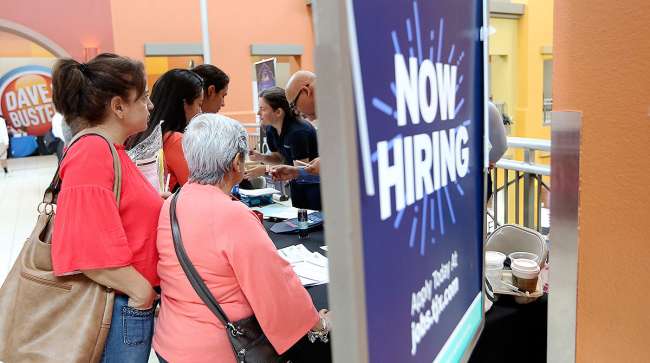US Gains a Robust 266,000 Jobs

[Stay on top of transportation news: Get TTNews in your inbox.]
WASHINGTON — Hiring in the United States jumped last month to its highest level since January as U.S. employers shrugged off trade conflicts and a global slowdown and added 266,000 jobs.
The unemployment rate dipped to 3.5% from 3.6% in October, matching a half-century low, the Labor Department reported Dec. 6. And wages rose a solid 3.1% in November compared with a year earlier.
Payroll employment rises by 266,000 in November; unemployment rate changes little at 3.5% https://t.co/NsuHovcqn0 #JobsReport #BLSdata
— BLS-Labor Statistics (@BLS_gov) December 6, 2019
Stock futures surged on the unexpectedly strong jobs report.
November’s healthy job gain runs against a widespread view that many employers are either delaying hiring until a breakthrough in the U.S.-China trade war is reached or are struggling to find workers with unemployment so low. The pace of hiring points to the resilience of the job market and economy more than a decade into the U.S. economic expansion — the longest on record.
The steady job growth has helped reassure consumers that the economy is expanding and that their jobs and incomes remain secure. Consumer spending has become an even more important driver of growth as the Trump administration’s trade conflicts have reduced exports and led many businesses to cut spending.
Monthly job growth has in fact accelerated since this summer, averaging 205,000 over the past three months, up from just 135,000 in July.
Renewed concerns that trade will continue to hamper the U.S. economy drove stock prices lower earlier this week, after President Donald Trump said he was willing to wait until after the 2020 elections to strike a preliminary trade agreement with China. With the two sides still haggling, the administration is set to impose 15% tariffs on an additional $160 billion of Chinese imports beginning Dec. 15.
Both sides have since suggested that the negotiations are making progress, but there is still no sign of a resolution.
The return of striking General Motors autoworkers added about 40,000 jobs in November, a one-time bounce-back that followed a similar decline in October, when the GM strikers weren’t counted as employed. Excluding the returning strikers, factories added 13,000 jobs last month.
In the Dec. 6 hiring data, besides reporting the healthy November gain, the government revised up its estimate of job growth for September and October by a combined 41,000.
Outsize hiring for the holiday shopping season did not appear to be a major driver of last month’s job growth. Retailers added just 2,000 jobs on a seasonally adjusted basis. And transportation and warehousing firms gained fewer than 16,000. Both figures are below last year’s totals. The shopping season is shorter this year because Thanksgiving occurred later than in recent years, which might be delaying some temporary hiring.
Employers have been adding jobs at a solid enough pace to absorb new job seekers and to potentially lower the unemployment rate, though the pace of job growth is still down from last year’s rate.
With tariffs hobbling manufacturing, the job market this year has underscored a bifurcation in the economy: Service industries — finance, engineering, health care and the like — have been hiring at a solid pace, while manufacturers, miners and builders have been posting weak numbers.
Most analysts say they remain hopeful about the economy and the job market. The economy grew at a 2.1% annual rate in the July-September quarter, and the annual pace is thought to be slowing to roughly 1.5% to 2% in the final three months of the year — sluggish but far from recessionary.
Consumer confidence has slipped in recent months but remains at a decent level, helping boost sales of expensive purchases, such as autos and appliances.
With inflation surprisingly low, the Federal Reserve has cut its benchmark short-term interest rate three times this year. Those rate cuts have helped support the housing market. Sales of existing homes have risen nearly 5% in the past year. Sales of new homes have soared by one-third.
Want more news? Listen to today's daily briefing:




